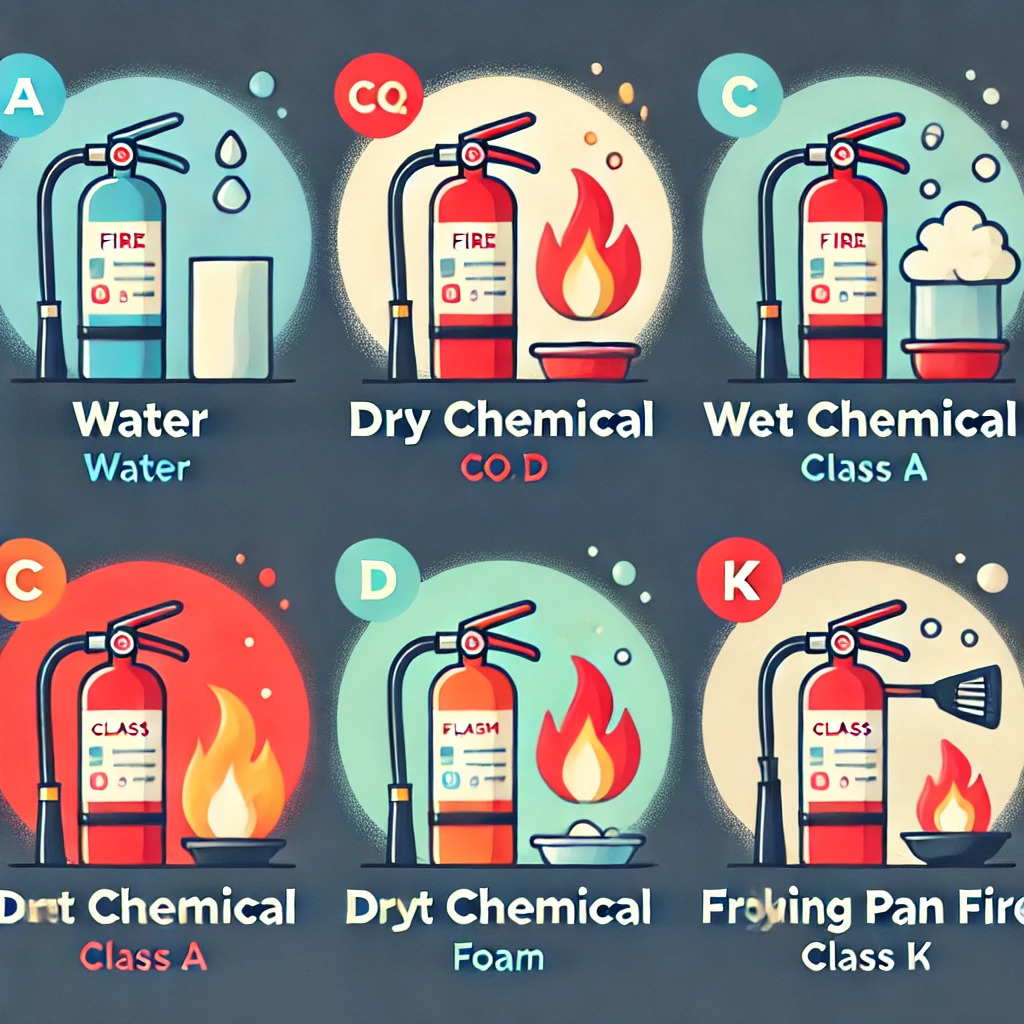
Introduction: When Seconds Count
Picture this: a small fire breaks out in your kitchen. You panic, unsure of what to do. Grabbing the nearest fire extinguisher, you aim and spray—but it’s the wrong type, and the flames intensify. This scenario underscores why understanding fire extinguisher types and their uses is critical. In this guide, we’ll break down the different types of fire extinguishers, explain their functions, and provide tips to ensure you’re prepared for any fire emergency.
The Basics: How Fire Extinguishers Work
Fire extinguishers are designed to remove one or more elements of the fire triangle: heat, fuel, and oxygen. By disrupting this balance, the extinguisher extinguishes the flames. However, not all fires are the same, which is why different types of extinguishers exist.
Fire Classes: What Are You Fighting?
Fires are categorized into different classes based on the materials involved:
- Class A: Fires involving ordinary combustibles like wood, paper, cloth, and trash.
- Class B: Fires fueled by flammable liquids such as gasoline, oil, and grease.
- Class C: Fires caused by electrical equipment, such as appliances, wiring, and circuit breakers.
- Class D: Fires involving combustible metals like magnesium, titanium, and aluminum.
- Class K: Fires in cooking appliances involving oils and fats.
Types of Fire Extinguishers
Each extinguisher is tailored to specific fire classes. Here’s a detailed look at the most common types:
- Water Extinguishers (Class A)
- Best for: Combustible materials such as wood and paper.
- How it works: Cools the fire by removing heat.
- Not suitable for: Flammable liquids or electrical fires.
- Carbon Dioxide (CO2) Extinguishers (Class B, C)
- Best for: Flammable liquids and electrical fires.
- How it works: Displaces oxygen and cools the fire with a cold discharge.
- Advantages: Leaves no residue, making it ideal for electrical equipment.
- Dry Chemical Extinguishers (Class A, B, C)
- Best for: A wide range of fires, including combustibles, flammable liquids, and electrical fires.
- How it works: Coats the fuel with a fine powder to block oxygen.
- Types:
- BC Dry Chemical: For flammable liquids and electrical fires.
- ABC Dry Chemical: Versatile, suitable for all three classes.
- Wet Chemical Extinguishers (Class K)
- Best for: Kitchen fires involving cooking oils and fats.
- How it works: Forms a soapy layer over the oil, cooling it and preventing re-ignition.
- Special features: Often required in commercial kitchens.
- Foam Extinguishers (Class A, B)
- Best for: Combustibles and flammable liquids.
- How it works: Forms a barrier on the liquid’s surface to suppress vapors.
- Advantages: Effective on liquid spills.
- Class D Extinguishers
- Best for: Fires involving combustible metals.
- How it works: Releases a specialized powder to smother the fire.
- Use case: Industrial settings where metal fires are a risk.
Choosing the Right Extinguisher
Selecting the appropriate extinguisher depends on your environment:
- Home: An ABC extinguisher covers most common household fire risks.
- Kitchen: A Class K extinguisher is essential for cooking fires.
- Garage or Workshop: Keep a BC or Class D extinguisher for flammable liquids and metal fires.
- Office: CO2 extinguishers are ideal for protecting electronics.
Maintenance and Safety Tips
A fire extinguisher is only effective if it’s well-maintained:
- Inspect Regularly: Check the pressure gauge, ensuring the needle is in the green zone.
- Service Annually: Have a professional inspect and service your extinguishers.
- Replace When Necessary: Extinguishers have a lifespan of 5-15 years. Replace them if they’re expired.
- Learn How to Use It: Familiarize yourself with the PASS method:
- P: Pull the pin.
- A: Aim at the base of the fire.
- S: Squeeze the handle.
- S: Sweep side to side.
Conclusion: Be Ready, Stay Safe
Fire extinguishers are powerful tools, but they must be used correctly to be effective. By understanding the different types and their uses, you can confidently tackle small fires and protect your home or workplace. Remember, fire safety starts with preparation. Take the time to assess your fire risks and ensure you’re equipped with the right extinguishers—they might just save a life.
Call-to-Action: Share this guide to spread awareness, and check your fire extinguishers today. Are they ready for an emergency?
